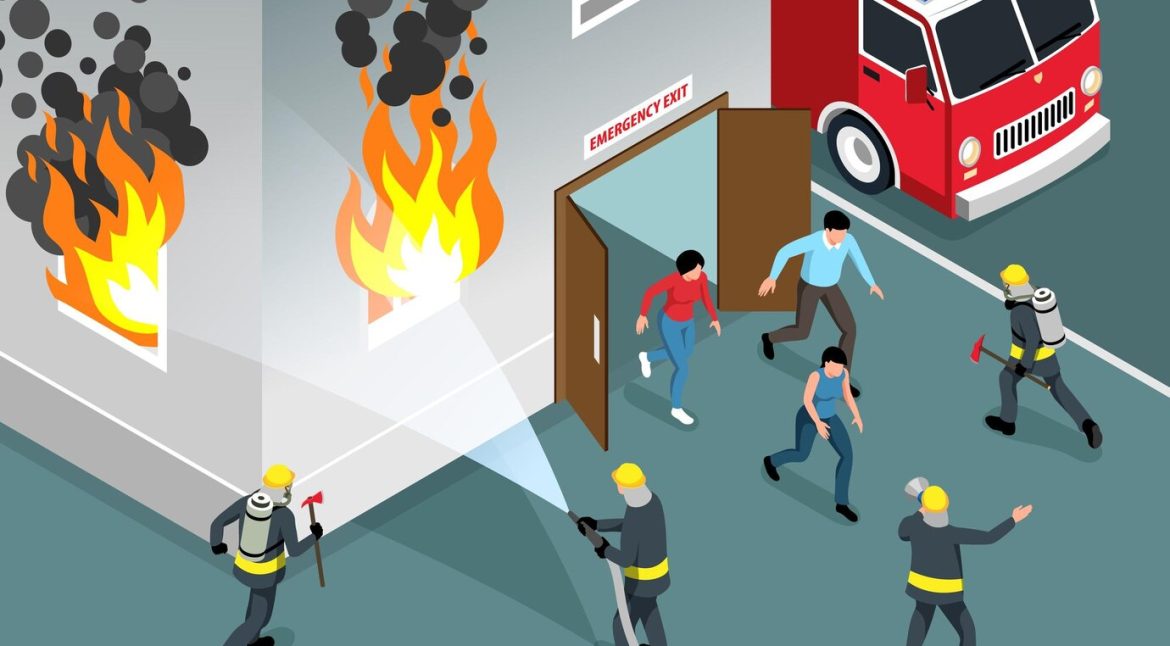Ensuring the safety of patients, staff, and visitors in a hospital is of paramount importance. One of the most effective ways to prepare for emergencies is by conducting a fire mock drill in hospitals. These drills form a crucial part of workplace safety training, equipping hospital staff with the necessary skills to respond swiftly and efficiently in case of fire emergencies.
Importance of Fire Mock Drills in Hospitals
Hospitals house vulnerable individuals, sophisticated medical equipment, and highly flammable substances, making them prone to fire hazards. A well-structured fire mock drill in a hospital provides the following benefits:
- Enhances Emergency Preparedness – Trains staff to act promptly and follow evacuation protocols during fire incidents.
- Reduces Panic – Helps minimize chaos by familiarizing staff and patients with emergency exits and procedures.
- Tests Fire Safety Equipment – Ensures fire alarms, extinguishers, and sprinklers are functional.
- Improves Coordination – Encourages teamwork and collaboration among medical, administrative, and security personnel.
- Ensures Compliance – Meets legal and regulatory fire safety requirements to avoid penalties and enhance overall hospital safety.
Steps to Conduct an Effective Fire Mock Drill in a Hospital
For a fire mock drill in a hospital to be successful, it must be well-planned and executed. Here are the key steps:
1. Planning the Drill
- Define objectives such as evacuation time, response efficiency, and hazard identification.
- Assign roles and responsibilities to staff members.
- Develop realistic fire emergency scenarios.
2. Training and Awareness
- Conduct workplace safety training for staff on fire safety measures.
- Educate personnel about the location of fire extinguishers, emergency exits, and assembly points.
3. Executing the Drill
- Sound the alarm to initiate the drill.
- Observe staff response time and effectiveness in guiding patients.
- Monitor the performance of fire safety equipment.
4. Evaluation and Improvement
- Gather feedback from staff and emergency responders.
- Identify gaps and areas of improvement.
- Implement corrective actions for better preparedness in the future.
Role of Workplace Safety Training in Fire Emergency Preparedness
Workplace safety training plays a vital role in reducing fire-related risks in hospitals. Some of the essential fire safety training aspects include:
- Fire Prevention Measures – Identifying fire hazards and implementing prevention techniques.
- Evacuation Procedures – Teaching staff how to lead patients safely to exits.
- Handling Fire Equipment – Training employees to use fire extinguishers and emergency alarms.
- First Aid and CPR – Preparing staff to assist injured individuals before medical help arrives.
Regulatory Compliance and Fire Safety Standards
Hospitals must adhere to fire safety regulations, such as:
- National Building Code (NBC) guidelines
- Fire safety norms set by the National Fire Protection Association (NFPA)
- State and local fire department regulations
Regular fire mock drills help in meeting these compliance requirements and enhance the hospital’s safety protocols.
Conclusion
A fire mock drill in a hospital is a crucial component of workplace safety training, ensuring that all staff members are well-prepared to handle fire emergencies. Conducting routine drills not only safeguards lives but also minimizes damage to property and medical infrastructure. Hospitals should prioritize fire safety training to create a secure and prepared environment for patients and employees alike.
For expert workplace safety training and fire safety solutions, visit Indsafe today!


